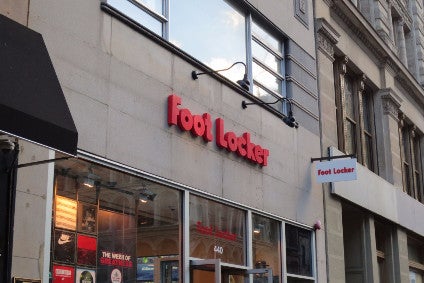
On a call with analysts in the wake of its fourth-quarter and full-year results, Foot Locker said it expects sales to fall by 4% to 6% this year, and same-store sales are projected to decline by 8% to 10% as it anticipates fewer sales of Nike products, news which sent its shares tumbling by nearly 30% on Friday 25 February.
Beginning in Q4 of 2022, Foot Locker says it is not expecting any one vendor to comprise more than 55% of product spend. This is down from 65% in Q4 of 2022 with Foot Locker chief financial officer, Andrew Page, saying it reflects Nike’s accelerated strategic shift to direct-to-consumer and Foot Locker’s ongoing brand and category diversification efforts.
On an annual basis, purchases from Nike won’t exceed 60% of total purchases this year, it said, down from 70% in 2021 and 75% in 2020.
Nike has been incredibly vocal about its desire to reduce its reliance on wholesale suppliers, instead transforming its supply chain to servicing consumers more directly.
The Consumer Direct Acceleration which it announced in June 2020 is the “digitally empowered phase of its Consumer Direct strategy”, and aims to create “a clear and connected digital marketplace…more closely aligned with what consumers want and need,” Nike president and CEO John Donahoe told analysts at the time.
Foot Locker CEO and chairman Richard Johnson assured Nike would remain a strategic partner for Foot Locker and that it was working on “building complementary strategies to their DTC growth.”
But it would also be accelerating its own direct-to-consumer efforts by launching a number of private-label lines and leaning into existing relationships with brands such as New Balance, Puma and Crocs.
“Their [Nike’s] support of us in specifically basketball, kids and sneaker culture continues to be elevated. So again, I feel great about the relationship. We have ongoing dialogues with them as we plan our business. And this has been something that’s been in process for a while as we’ve continued to shift our business and focus on the things that we need to do for our company. So again, strong relationship there,” Johnson said.
“One of the things that Nike does the best is it controls the flow of these high-heat products into the marketplace, which keeps the demand high. So again, it will certainly benefit their DTC with some of that. We’ll continue to benefit from that. But our biggest benefit will be broadening our assortment with them and bringing other brand partners in.”
Asked whether Foot Locker had foresight Nike was headed this way, Johnson responded the journey started just prior to Covid, but added the pandemic “allowed us all to see that the consumer is changing, the consumer behaviours are changing.”
“Our consumer is clearly saying that they want choice and that multibrand destinations matter. And when 70-plus percent of your 75% of your purchases are with one vendor, it doesn’t leave a lot of space in your store for choice. So that’s part of what we’re looking at. So really, it’s an acceleration of conversation that’s been going on for a couple of years, and it was late January when we worked on the planning for 2022.”



